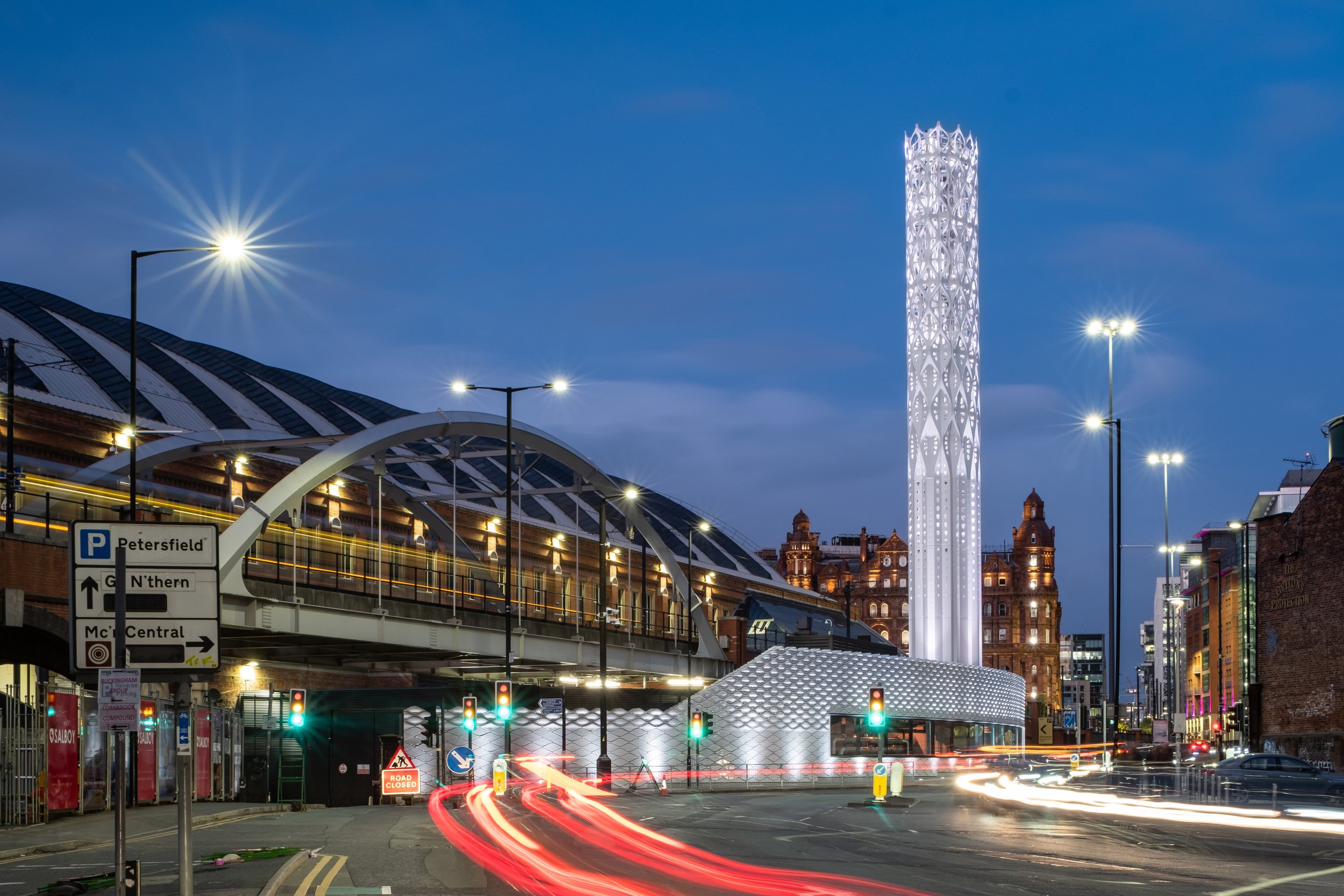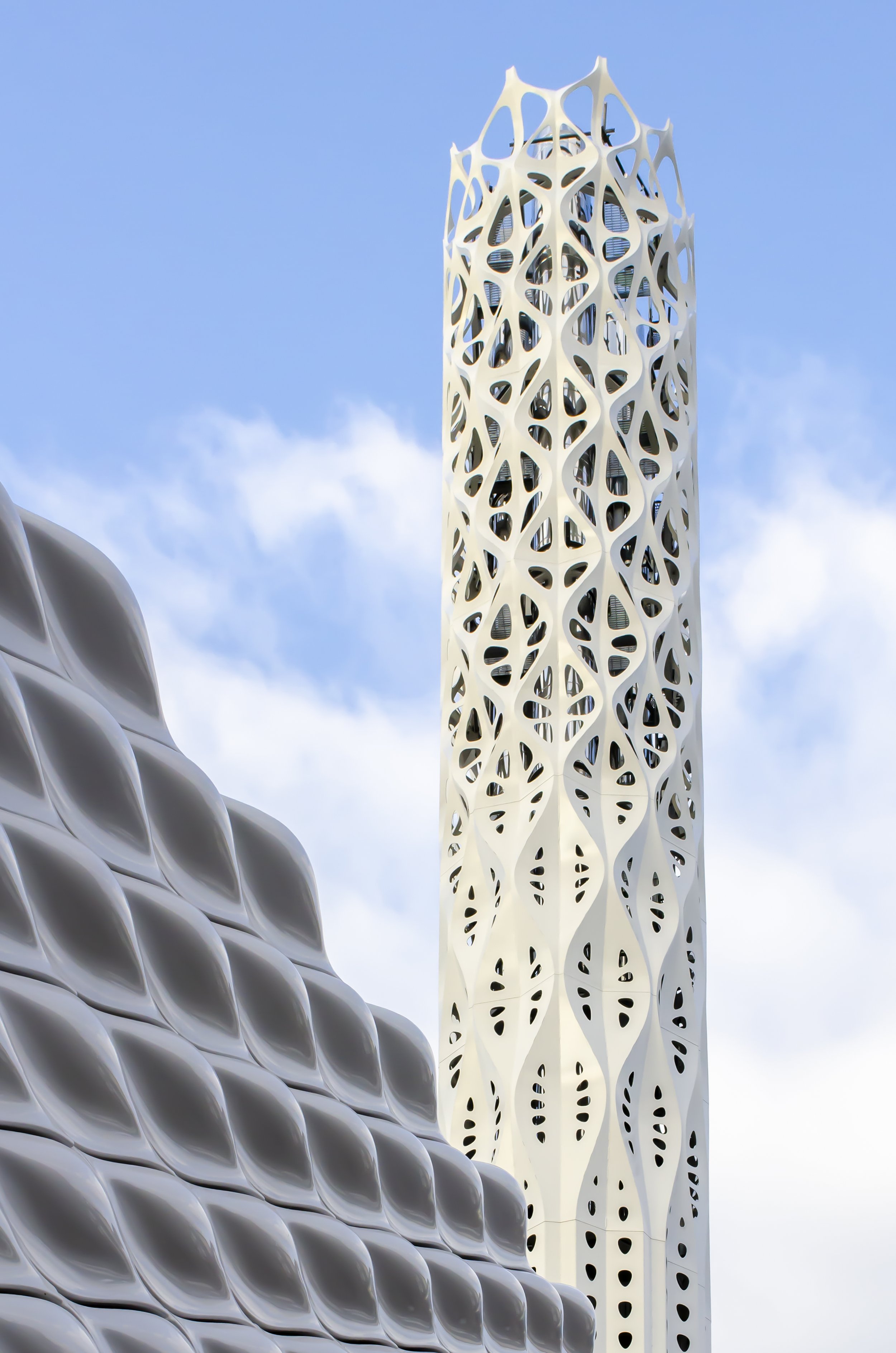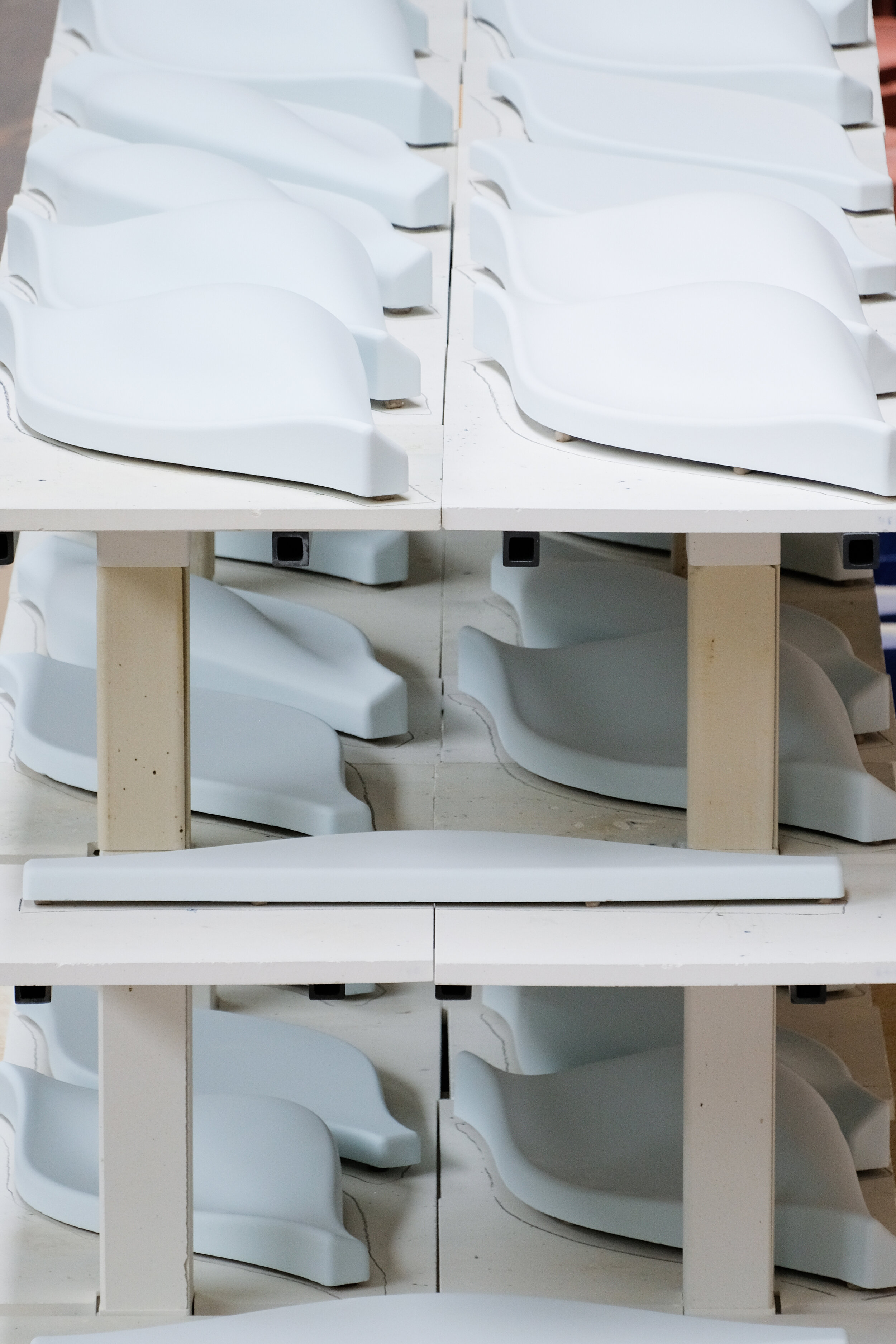tower of light
tower of light
capture the energy of the sun
harness the power of the wind
herald the city’s low carbon future
Innovation & Beauty, AIA Awards 2025
Winner, RIBA North West Awards 2023
Winner, International Architecture Awards 2023
Winner, Building Beauty Awards 2022
Winner, Tall Building Architect, Tall Buildings Awards 2022
Winner, Structural Design Awards 2022
Winner, Public Realm, Civic Trust Award 2022
Shortlisted, IStructE Regional Awards 2022
Shortlisted, Energy Awards 2022
Longlisted, Dezeen Awards 2022
Shortlisted, Transport and Infrastructure, AJ Awards 2021
Shortlisted, Utility Project of the Year, BCIA Awards 2021
Highly Commended, NIC Principles, BCIA Awards 2021
Winner, Net Zero, Future Cities Forum Awards 2020
The Tower of Light is a 40-metre tall tower supporting and enclosing flues for a new low-carbon energy centre in Manchester’s city centre. The biomimetic structure has built on the decade-long innovation and research, Shell Lace Structure, pioneered by Tonkin Liu and developed in collaboration with engineers at Arup. Learning from geometries in nature, the tower’s form is its strength. The super-light, super-thin single-surface structure uses the least material to achieve the most. The tower is constructed from 6 and 8mm thick flat steel sheets, tailored, laser-cut, then welded together to create a curved stiff strong surface. Modern methods of construction using advanced digital modelling, analysis, and fabrication, combined with principles of tailoring, have made the Shell Lace Structure innovation possible. This is the largest built Shell Lace Structure to date.
The Wall of Energy is a 63-metre long, 4-6 metre height street façade enclosing the new energy centre. The glazed ceramic tiles reflect light and movement from the clouds in the sky, and the hustle and bustle of pedestrians and cars on the streets. The tessellated interlocking lozenge tile pattern evokes the dynamic energy of earth’s movements, as seen in patterns left in the sand by ocean waves. The 31 different tile types produce undulations that increase in height, across a total of 1373 tiles. Contained within a structure inspired by nature, the technological working of the new energy centre hall can be viewed through a long ribbon window.
“You’d have a heart of stone not to enjoy he simple pleasures the Tower of Light offers, and the inspired commitment in which it was designed and built.”
- Rowan Moore, The Guardian
Minimal energy is used to light the Tower of Light. During the day, polished reflectors inside the tower move in the wind, to reflect sunlight into the tower’s chambers and fill the tower with moving light. During the night, LED lights directed at the reflectors create animated, programmed light sequences every quarter of an hour, marking the passage of time. The Wall of Energy reflects the light of moving clouds and car headlights on the street, as well as being animated with integrated programmed light at night. On landmark dates across the year, the tower and wall are illuminated together with colours to mark cultural celebrations.
Tonkin Liu worked with locally based fabricators to deliver both the tower and the wall. The tower was fabricated by Shawton Engineering, where the final stitch-welding was reserved for the most experienced hands of two veteran welders. The ceramic tiles were fabricated by Darwen Terracotta, one of the UK’s oldest and most respected terracotta companies.
“An exceptionally intelligent and elegant design solution – it is appropriately utilitarian whilst at the same time a playful, beautiful, and sculptural architectural solution to a constrained difficult city centre site.”
- Civic Trust Awards 2022 Jurors
The Wall of Energy’s 1,300 tiles during fabrication at Darwen Terracotta in Blackburn, Lancashire
With the opening of the Civic Quarter Heat Network (CQHN) and Energy Centre, Manchester’s Civic Quarter is provided with low carbon energy, across the 2 km network providing a highly efficient source of heat and power. The energy centre contains a 3.3MWe CHP engine and two 12MW gas boilers, with the capability to add future energy technologies without disruption to the supply. Heat from the power-generating CHP engine is harnessed to create hot water, distributed through insulated district pipework across the city network. The technology improves energy efficiency by as much as 45%, saving Manchester 1,600 tonnes of carbon emissions each year, and contributing towards the city's goal of becoming zero carbon by 2038.
The completed Tower of Light and Wall of Energy create a prominent new gateway into Manchester’s historic district. Together they form a holistic energy landmark that engages communities with the innovative technologies at the heart of Manchester’s low-carbon ambition and climate change action plan.
“This is a fantastic opportunity for Manchester to improve air quality and the environmental quality and attractiveness of the city, and we believe this flagship project will make a significant contribution to achieving those ambitions.”
- Councillor Angeliki Stogia, Manchester City Council’s Executive Member for the Environment and Skills
client manchester city council and vital energi
location manchester, uk
status completed february 2022
structural engineer arup
lighting consultant seam
steelwork fabricator shawton engineering
tile manufacturer darwen terracotta
photography david valinsky and matthew burnett









